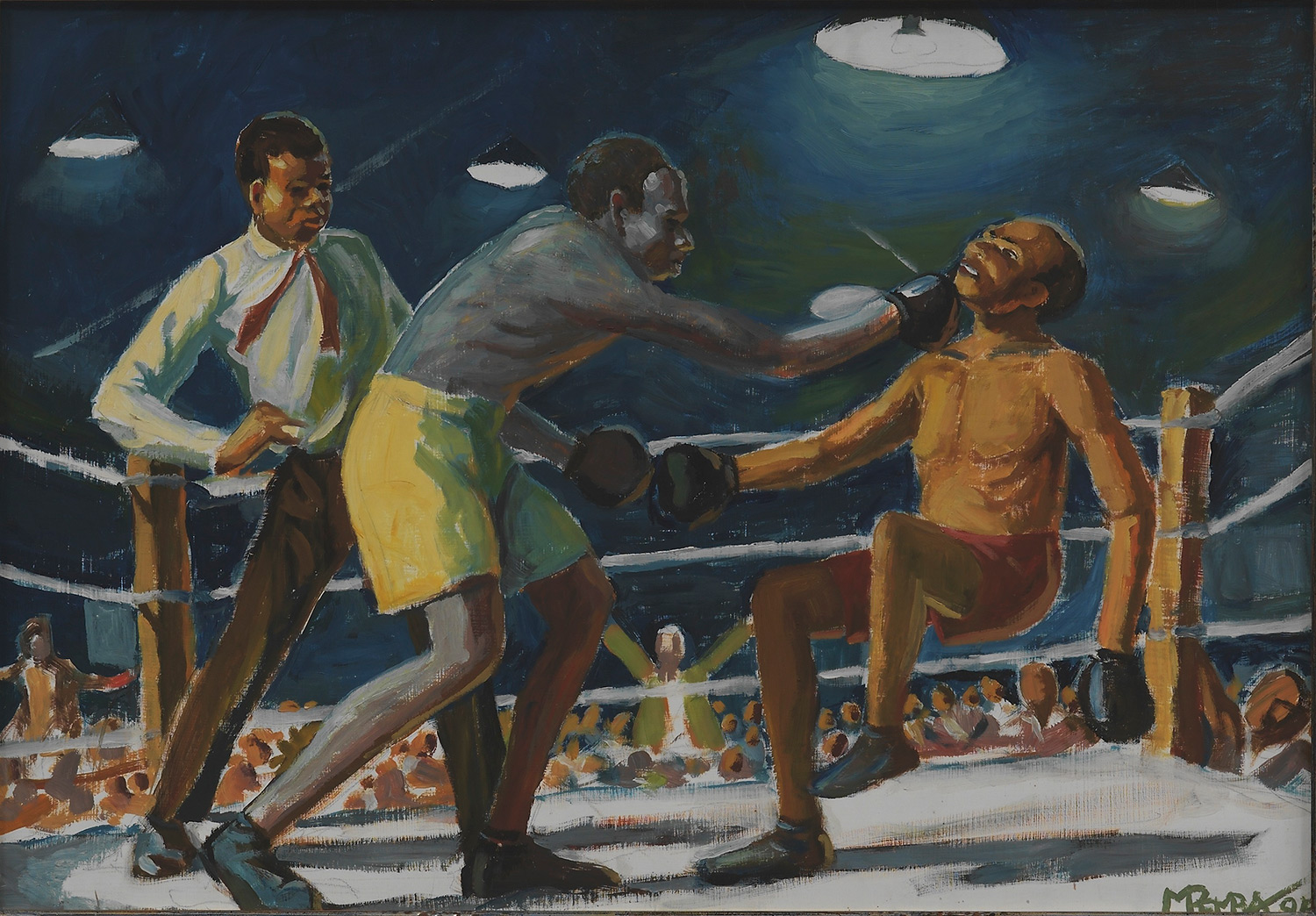Milwa Mnyaluza George PEMBA (1912 – 2001)
BIOGRAPHY
Milwa Mnyaluza George Pemba was one of South Africa’s most significant Modernist painters.
He was born at Hill’s Kraal in Korsten, Port Elizabeth (now Gqeberha). Although art classes were not offered at the Van der Kemp Mission Primary School, where he was educated, Pemba developed an early love for art, which was encouraged by his father, who bought him pencils and crayons. The young Pemba became notorious for escaping from the drudgery of schoolwork into his private world of drawing.
In 1924, Pemba won a Grey Scholarship to Paterson School, where he devoured the art books in the school library. At 16, he entered and won an art competition at a local agricultural show. He began to expand his repertoire to include portrait drawings based on photographs, for which he earned pocket-money.
In his early twenties, he was treated for a burst appendix and spent his hospital stay drawing pictures of nurses and doctors. His hospital drawings caught the attention of landscape painter Ethel Smythe, who took an interest in Pemba and offered him tutelage. Smythe possessed a large collection of books that introduced him to the work of Dutch Golden Age artist Rembrandt van Rijn, Spanish artist Diego Velázquez and the art of Impressionism.
Pemba’s paintings and drawings slowly began to attract a wider audience and led to him exhibiting more widely. In 1948, entirely against the tide of the growing threat of overt racism engulfing South African society, he held his first solo exhibition in East London.
Despite indifference and opposition from the mainstream art world and the Apartheid government, Pemba persevered with his work thanks to the support of a few patrons, and his wife Eunice, who helped to supplement his income by running a ‘house shop’.
The sale of his paintings at the Eastern Province Art Association’s annual exhibition in 1965, provoked undisguised racial hostility.
Nonetheless, Pemba continued to pursue his art successfully, exhibiting regularly for several decades. In the last few years of his life, he received belated recognition from the art world and South Africans at large. His extraordinary sensitivity as a painter, close observational skills and dogged determination to express himself as a Black artist despite the odds, mark him as a South African to be remembered and admired for all time.
Pemba, was also a writer of note, and penned at least two plays known to have been staged, namely The Story of Nongqawuse and The Xhosa Prophet Ntsikana.
He was awarded with an honorary Masters’ Degree from University of Fort Hare in 1979 for his contribution to South African art.
The South African Government bestowed Pemba with the Order of Ikhamanga in Gold in 2004, for his pioneering and exceptional contribution to the development of the art of painting and literature.


